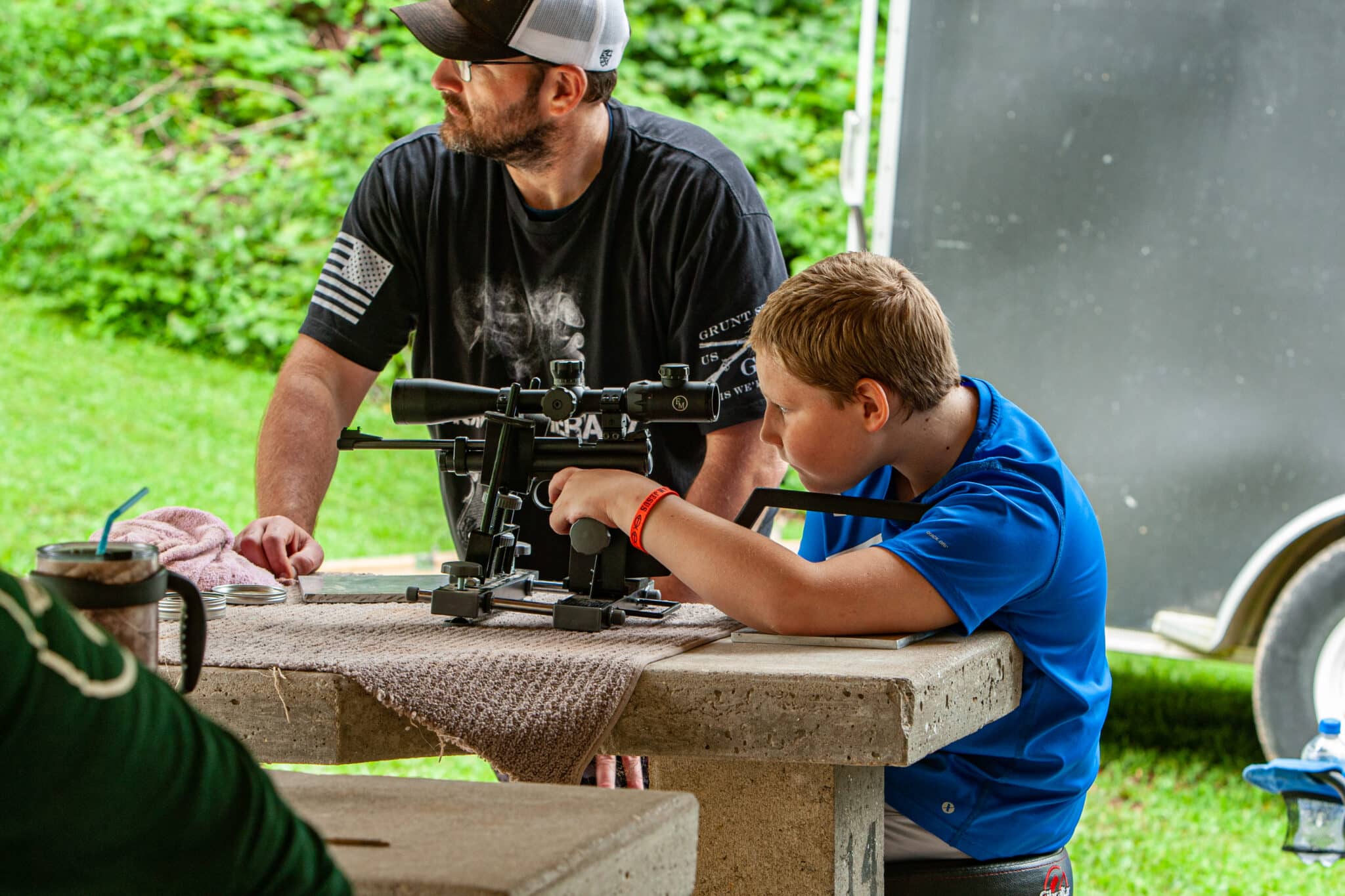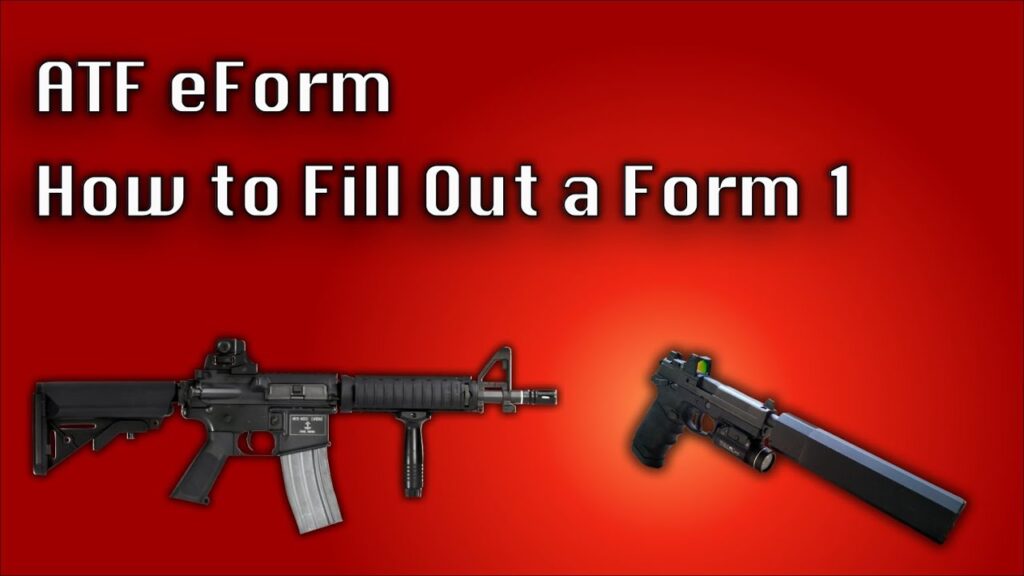How to Fill Out an ATF eForm 1
A recent ATF ruling has declared that certain types of pistols with an attached brace are now considered short-barreled rifles (SBR). As a result, owners of these firearms are required to either remove the brace, add a barrel in excess of 16-inches or register the pistol as an SBR with the NFA (National Firearms Act).
Because ATF and the Attorney General are holding the position that these firearms had always been short-barreled rifles and that they were wrong with regard to previous interpretations, the normal $200 tax to build an SBR has been waived as long as the process is started before May 31, 2023. Submissions after that date will require a $200 tax.
The federal form to register or “make” an NFA item such as an SBR is called a Form 1. Those who have been in the NFA game for awhile may be familiar with it. However, many bought a braced pistol to avoid the NFA process. If you are unsure of how to fill out the form and want to know what to be mindful of, please read on.
eForms
Although the NFA process has been around for close to 90 years, the eForm process is a much more recent iteration. These eForms have greatly sped up the process for the most part, particularly with dealer to dealer transactions, but the eForm 1 is a relatively new system.
To use eForms, you will need to create an account and register with ATF. Once you create an account and login, you will want to select the Tax Exempt Registration option in order to register your braced pistol as an SBR.
Your first option will be to select whether you are registering as an individual, trust, corporation, other legal entity or government agency.
If you are going to register the braced pistol in a trust, the ATF has the following information on the site:
“To lawfully register the firearm to a trust, the trust must have possessed the firearm before January 31, 2023. Accordingly, you must submit with the application documentation that establishes the trust possessed the firearm before January 31, 2023.
“A trust may not register a “stabilizing brace” equipped firearm pursuant to ATF Final Rule 2021R-08F unless the trust can establish through documentary evidence that the trust possessed the firearm before January 31, 2023.
“Under the final rule, the Attorney General has authorized a tax forbearance that allows current possessors of “stabilizing brace” equipped firearms that meet the definition of “rifle” and have a barrel or barrels less than 16 inches to register the firearms tax-free. A current possessor is a person who possessed the “stabilizing brace” equipped firearm prior to January 31, 2023.
“Accordingly, any trust that seeks to register a “stabilizing brace” equipped firearm pursuant to Final Rule 2021R-08F must include with the eForm 1 application evidence that establishes the trust is the current possessor of the “stabilizing brace” equipped firearm, and possessed it before January 31, 2023. This evidence will generally include the signed, dated, and notarized terms of the trust or trust schedules that list or provide a description of the property held in trust. Accordingly, for trust applicants, ATF will perform a thorough review of the trust documents provided with the eForm 1 application to ensure the firearm sought to be registered to the trust was property possessed by the trust before January 31, 2023. Therefore, an eForm 1 application to register a “stabilizing brace” equipped firearm to a trust will be disapproved if the applicant fails to demonstrate the trust possessed the firearm before January 31, 2023.”
Curiously, this caveat is not given for those who are registering as a corporation or other legal entity.
The path to registering is fairly straightforward from here on out. You will need to provide passport-sized photos and a set of fingerprints if applying as an individual. If filing as a trust, photos and fingerprints will need to be provided for each of the trustees.
You will fill out the first part listing your identifying information,: Name, address, etc., followed by a section similar to completing a 4473 regarding criminal history and citizenship. The third page asks for the information about your Chief Law Enforcement Officer (CLEO). This is most often your local county sheriff, but sometimes it can be a local police department.
The next section will identify the firearm in question by manufacturer, model, serial number, caliber, barrel length and overall length. The dropdown menu for the manufacturer and model number are fairly comprehensive. Caliber is, for the most part, but may not be completely inclusive; if your receiver is marked “Multi,” list the caliber of the rifled barrel which is attached . If your manufacturer or model number is not listed, you will have an option to add this manually.
When it comes to overall length, keep in mind ATF’s most recent prior ruling, which measured the overall length of a braced pistol or firearm with the brace extended as opposed to traditional SBRs which measured overall length with the stock folded or otherwise collapsed. Additionally, ATF will ask why you are creating the SBR. A good answer is: “For all lawful purposes and to comply with ATF’s latest ruling regarding pistol braced firearms.”
At this point there will also be an option to upload photographs of the firearm. This is optional for uploading the firearm’s engraving, which lists model, caliber, etc. If you are registering a pistol built from an 80% lower receiver, you will need to include your name and city and state as the manufacturer. This is the only instance where you will need to engrave your receiver or barrel with this information. Typically, when someone is making an SBR from an existing firearm, they are required to engrave their name and city and state as an act of bureaucratic redundancy. ATF is waiving that requirement putting the onus of the build back to the OEM manufacturer.
After completing this, you proceed to the next step, where you certify and verify everything you have submitted and hit the final submit button. After the final submission you will see a virtual copy of your submitted Form 1 with a SUBMITTED watermark throughout the document and you will receive an email confirmation from ATF that you have submitted the Form 1. You should print a copy of this for your records. When ATF completes your background check and approves your form, you will receive a digital copy of the Form1.
The Form 1 for these braced pistols will look a little different from typical NFA forms. Namely it will not have a $200 tax stamp or facsimile of such on the right hand side. That is because it is a tax exempt transfer.
From start to finish, the time to complete this form is not much longer than filling out a 4473 when purchasing a firearm at retail. Even though the background check takes longer than a typical NICS check, it is essentially the same.
If this is what you consider to be a mountain of paperwork, you do have the option of going through a third party like Silencer Shop, who is submitting on behalf of people using their in-store kiosks to facilitate the fingerprint cards.
For more information, see Silencer Shop’s informative video above.
Can you submit ATF Form 1 online?
You can submit an ATF Form 1 online through the ATF’s eForms system. The eForm 1 is an electronic version of the ATF Form 1, which is used to apply for a tax stamp for NFA (National Firearms Act) items such as suppressors, short-barreled rifles, and other regulated firearms.
To submit an ATF Form 1 online, you will need to create an account on the ATF’s eForms website, which is a secure and user-friendly platform that allows you to fill out and submit the form electronically. You will need to provide all required information and pay the appropriate fee using a credit card or electronic check.
Once your eForm 1 is submitted, you will be able to check the status of your application online through the eForms system. The processing time for an eForm 1 can vary, but submitting the form online can often be faster than submitting a paper form by mail. It’s always a good idea to check the current processing times on the ATF’s website or contact their customer service for more information.
What is the average wait time for an eForm 1?
The wait time for an eForm 1 can vary depending on various factors such as the workload of the processing agency, the completeness and accuracy of the information provided in the form, and the level of demand for the service.
The eForm 1 is primarily used for the application of tax stamps for NFA (National Firearms Act) items such as suppressors, short-barreled rifles, and other regulated firearms. The processing of the eForm 1 is typically handled by the ATF’s National Firearms Act (NFA) Branch, which receives a large volume of applications each year.
As of my knowledge cutoff date of September 2021, the average processing time for an eForm 1 was around 30 days. However, it’s important to note that this is an average and wait times can vary depending on the factors mentioned above. Additionally, due to the impact of the COVID-19 pandemic and other potential factors, wait times may have changed since then. It’s always best to check the current processing times on the ATF’s website or contact their customer service directly for the most up-to-date information.
About Mike Searson
Mike Searson’s career as a shooter began as a Marine Rifleman at age 17. He has worked in the firearms industry his entire adult life as a Gunsmith, Ballistician, Consultant, Salesman, and Author and was first certified to teach firearms safety in 1989.
Mike has written over 2000+ articles for several magazines, websites, and newsletters, including Blade, RECOIL, OFF-GRID, Tactical Officer, SWAT, Tactical World, Gun Digest, Examiner.com, and the US Concealed Carry Association as well as AmmoLand Shooting Sports News.




